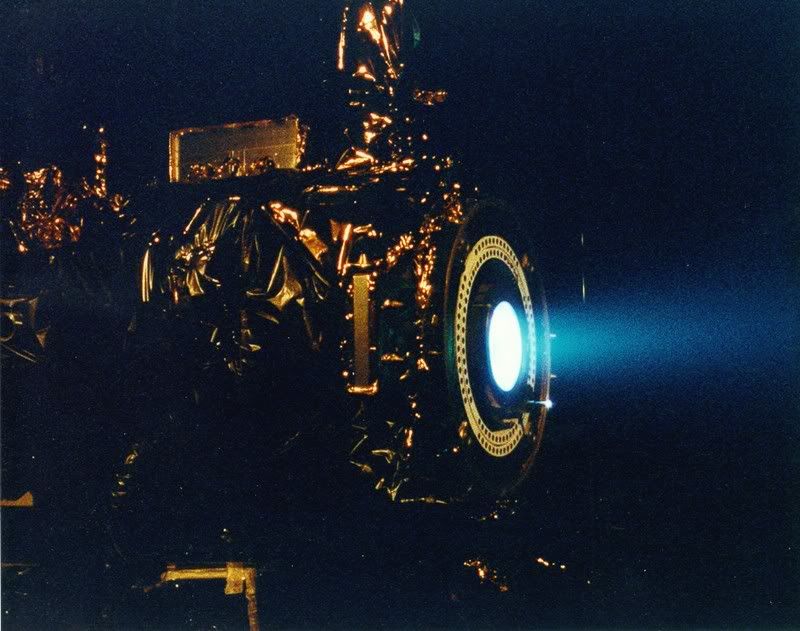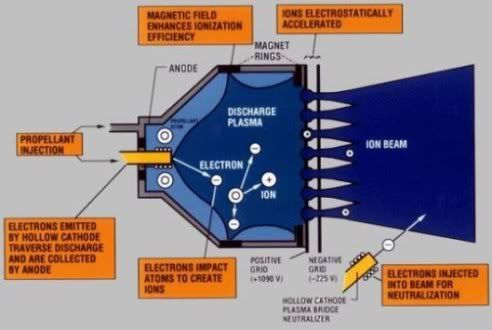
 |
|
|||||||
| Forum Rules | Firearms Safety | Firearms Photos | Links | Library | Lost Password | Email Changes |
| Register | FAQ | Calendar | Today's Posts | Search |
 |
|
|
Thread Tools | Search this Thread |
|
|
#1 |
|
Senior Member
Join Date: February 20, 2005
Location: Mouth of the Rat, Florida
Posts: 1,778
|
Where does velocity top out?
I understand that when you go from a 4in barrel to a 2in barrel you lose about 100fps, but where does velocity top out? If you go from a 4in barrel to a 6in barrel, do you pick up an extra 100fps? For example, in a 38spl revolver.
__________________
I grew up in New Jersey, but later moved to Florida and made a complete recovery.  Keltec: The BIC lighter of handguns http://jkwasblog.blogspot.com/ |
|
|
|
|
#2 |
|
Junior member
Join Date: October 10, 2006
Posts: 83
|
F=MA. That's all you need to know. Plus, conservation of energy. Your bullet can never gain more kinetic energy than that release in the explosion!
|
|
|
|
|
#3 |
|
Senior Member
Join Date: January 3, 2006
Location: Brockport, NY
Posts: 3,716
|
Every caliber is different, and every load is different. Most handgun cartridges are designed to achieve good velocities in shorter barrels. Stout loads need longer tubes to achieve max velocity.
There is a difference in performance between a 4" and a 6" barrel, sometimes it is significant.
__________________
You are the bows from which your children as living arrows are sent forth. |
|
|
|
|
#4 |
|
Senior Member
Join Date: December 29, 2004
Posts: 3,351
|
"Your bullet can never gain more kinetic energy than that release in the explosion!"
True, but not a very useful observation. The bullet ends up with a relatively small fraction of the available chemical energy in the powder. Depending on the powder composition and efficiency of burning no more than 30%, and often far less. Losses include heating, barrel friction, etc. The bullet will continue to gain velocity until the pressure behind it drops below the friction it is losing to the barrel. Rather short in a .22 rim fire (about 16 inches or so with high vel ammo) and significantly longer in larger cartridges (30 inches and more in 'overbore' cartridges). If you use the same powder in the long vs. the short barrel you will not typically gain as much as using a powder more suited to the longer barrel. A .38 special will often reach peak pressure before the bullet has cleared the case, while in a rifle the pressure is after a few inches of barrel travel. Quickload wil allow you to play around with barrel lengths and powders and get a better idea of what is happening. |
|
|
|
|
#5 |
|
Staff
Join Date: March 11, 2006
Location: Upper US
Posts: 28,832
|
Burn rate vs barrel length
Is the balancing act in handgun ammo. Many loads are made up with the faster burning powders, so they get the most from shorter barrels. Slower burning powders get a bigger boost in longer barrels. This is, however, relative. No handgun round loses velocity from longer barrels. What changes is the rate of increase.
An easy illustration is to look at handgun round fired out of carbines. The velocity out of an 18in carbine barrel is quite a lot higher than out of the pistol barrel. Even .38 Specials and 9mms keep gaining velocity with the longer barrels. A load intended for a short (4in or less) barrel will gain velocity from a longer barrel, even rifle length ones. Just not in a steady "xx fps per inch". The velocity increase (acceleration) in the first few inches will be more than in the last few inches, but there will still be an increase in the last few inches. Loads with slower burning powders (intended for longer barrels) keep a high rate of increase for more inches before the rate of increase slows down. But they keep increasing the whole time the bullet is in the barrel. Take for example, a very hot 125gr .357 Mag, that is doing close to 1400fps out of a 4in, 1600+ out of a 6in and 2100fps out of an 18inch barrel. You can see that the increase in speed is continous but the fps per inch is not constant. The bullet is not "coasting" or slowing down between 6in and 18in, it is still picking up speed, just not as fast as it did in the first 6 inches. Where does it top out? I'm not sure. Somewhere at a barrel length that in not practical to carry, even as a rifle. It is just that the longer the barrel gets, the fewer fps you get for those last few inches. Most of the big magnum rifles have 26in barrels, "standard" calibers 22in, and carbines 18or20in. Not because this is the point where maximum velocity is, but because this is the shortest length to get the desired performance. It is a trade off between performance (velocity) and the handling characteristics of the gun. Same thing with handguns, except that ALL handguns have barrels much shorter than what will produce maximum velocity. So, we accept the lesser velocity of a short barreled handgun in exchange for the increased "portability" of the short barrel.
__________________
All else being equal (and it almost never is) bigger bullets tend to work better. |
|
|
|
|
#6 |
|
Senior Member
Join Date: January 7, 2000
Location: Idaho
Posts: 6,073
|
I'll tell ya what I've read on the Internet. I make no claims about its accuracy.
Optimum barrel length for a .22 is 18". Longer than than and you lose velocity. .45acp carbines don't pick up much velocity over pistols. So that's probably near the max efficient length. 9mm carbines pick up more velocity. .357 and .44mag both pick up even more. So I suppose it does depend on the caliber.
__________________
I am Pro-Rights (on gun issues). |
|
|
|
|
#7 |
|
Senior Member
Join Date: April 11, 2006
Location: Northeast Ohio
Posts: 3,403
|
My SWAG (Scientific Wild Assed Guess)
Out of my 2.5" Smith 66, .357 Magnum Winchester Silvertips yielded a hugh fireball, making me think there was a lot of unburned powder going out of the barrel. The same loads out of my 18" Marlin rifle have almost no muzzle flash. I don't have access to a chronograph, so I can't tell you the difference in velocity, but you get the idea. FWIW.
|
|
|
|
|
#8 |
|
Junior member
Join Date: April 21, 2006
Location: New Orleans
Posts: 2,450
|
299,792.458 km/s, but once the bullet gets close to this velocity strange things start to happen with the fabric of spacetime...
|
|
|
|
|
#9 |
|
Senior Member
Join Date: December 19, 2005
Location: South Dakota
Posts: 263
|
The formula for calculating free recoil energy takes into account not only the chage weight of the powder but also the escape velocity of the gas at 7,000fps. It's a safe bet the projectile won't exceed the velocity of the propellant.
__________________
Real guns are steel..............and have cylinders I'm not an expert, but I play one on the internet. |
|
|
|
|
#10 |
|
Senior Member
Join Date: December 29, 2004
Posts: 3,351
|
The ultimate speed limit for any gas propelled gun weapon is the speed of sound in the driving gas.
Since the pressures are very high the speed of sound in the gas is high. If any projectile approached this velocity it would create a vacuum behind it. Following peak pressure teh gas is simply expanding in the ever increasing volume as the bullet moves down the barrel. If you have access to quickload you can watch the pressure drop as the bullet moves. Large muzzle flashes do not always indicate unburned powder. Nitorcellulose (single base powders) and nitroglycerin (used with nitrosellulose in double base powders) supply the ebergy. They do not burn in the conventional oxidation reaction, but decompose into hot gases. These gases can then combine again to form more stable componds, but very little energy comes from this process since it is to slow. To reduce flash extra oxidizers can be added to the powder to combine withthe hot gasses before they exit the barrel and combine withthe oxygen in the air. |
|
|
|
|
#11 |
|
Staff
Join Date: February 12, 2001
Location: DFW Area
Posts: 24,985
|
It's a balancing act between the barrel friction and the expanding gas.
It's impossible to make a blanket statement about what length barrel that's going to happen in. It's possible to do the testing and figure out the answer for a particular caliber, but even then, different weight bullets, jacketed vs non-jacketed, rifling types, powder types, etc., etc. will make that number vary considerably. For .22LR, the number is somewhere around 16" to 18". I can tell you with some level of confidence that you're NOT going to top out a centerfire pistol round in a barrel length that is remotely practical on a pistol.
__________________
Do you know about the TEXAS State Rifle Association?
|
|
|
|
|
#12 |
|
Junior member
Join Date: October 10, 2006
Posts: 83
|
Oh let's pour on some science fun. A nuclear test ended up flinging a piece of metal far up into the atmosphere. The scientists at the time wondered if it was the first human-made object in space. Nuclear cartridges are currently being worked on.

|
|
|
|
|
#13 |
|
Junior member
Join Date: April 21, 2006
Location: New Orleans
Posts: 2,450
|
There are ion-beam drives currently in development that will be able to boost a space-based projectile to 30 km/s. Unfortunately acceleration is pretty slow so a kinetic energy weapon would have to complete many orbits to get up to that sort of speed. Have y'all heard of the "Rods from God" project?
 
|
|
|
|
|
#14 |
|
Senior Member
Join Date: June 16, 2005
Location: AZ
Posts: 3,113
|
The "Rods from God" project is very interesting.
1'x20' tungsten rods dropped from a satellite as a first strike offensive weapon. |
|
|
 |
|
|